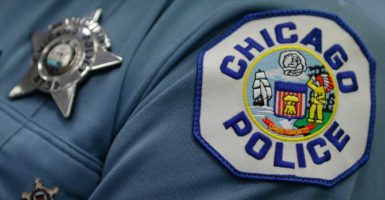The new year has just begun, but if the first few weeks are any indication, then the American law enforcement community could be in for a rough—and dangerous—2017.
In just the first 24 days of January, 12 police officers have already died or been killed in the line of duty. That represents a 140 percent jump from this time last year. Even more disconcerting, five of those officers have died as a result of gunfire, a whopping 150 percent increase from last year at this time.
2016 was already one of the most dangerous and difficult years for our nation’s police officers in recent memory. The number of officers shot and killed last year dramatically rose from the previous year and incidents of officers being indiscriminately ambushed created a toxic sense of vulnerability.
Unfortunately, the dangers continue.
Monday in New York, an Onondaga County sheriff’s deputy was ambushed and shot at by two assailants as he was conducting surveillance in an undercover vehicle. The deputy was fortunately not struck by the gunfire, but both suspects fled the scene and have not yet been apprehended.
What compelled these individuals to walk up to the deputy and attempt to kill him? What depraved mindset inspired such behavior?
Sadly, it would appear that the only premise for the attack was that the individual targeted was a police officer.
But the violent start to 2017 hasn’t only been directed toward law enforcement officers. Some areas of the country beset by a rise in violent crime last year have seen no slowdown to kick off the new year.
Last year, Chicago experienced a significant increase in the number of people shot and killed—762 murders in 2016 compared to 485 in 2015—and more than both Los Angeles and New York combined.
But January in Chicago has been just as, if not more, violent than the year before.
Over 40 people have been killed and nearly 250 shot in just a little over three weeks in a city that has become more well known for its violence than nearly anything else.
The rampant violence in Chicago even inspired President Donald Trump to tweet just yesterday:
If Chicago doesn't fix the horrible "carnage" going on, 228 shootings in 2017 with 42 killings (up 24% from 2016), I will send in the Feds!
— Donald J. Trump (@realDonaldTrump) January 25, 2017
Rising violent crime and emboldened criminals taking on our nation’s police officers will likely continue until the law enforcement community again feels empowered to do the type of police work that will bring crime rates down and restore order to our most dangerous communities.
Proactive policing, long understood to help reduce crime and not merely respond to it, has been on the decline over the past few years and it is no surprise that crime rates have commensurately risen.
A recent survey by the Pew Research Center found data to substantiate the “Ferguson effect,” a phenomenon where officers become disinclined to engage in proactive policing due to a fear of being unjustly labeled as racist or brutal.
This needs to change.
The American law enforcement community needs the support, both from the government and society, to do the tough job we have asked them to do. Rising violence and social dysfunction need not be the new normal.
Crime rates and violence against law enforcement can be reduced, but it requires society to empower and support the men and women who protect and serve.

























